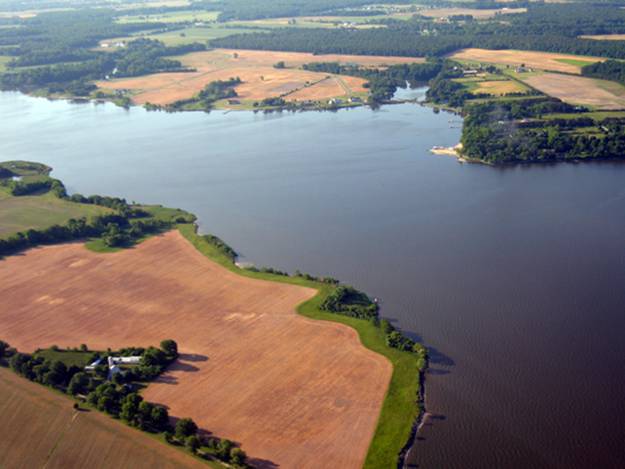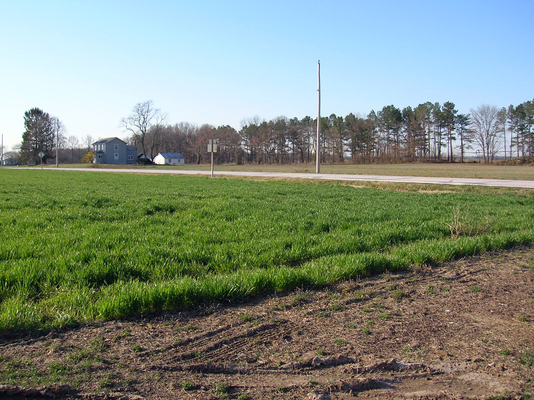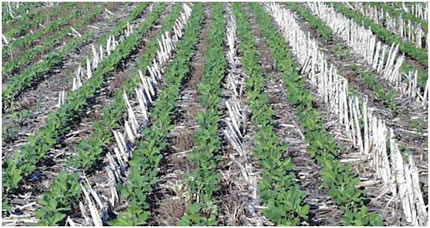Best Management Practices
Agricultural Best Management Practices (BMPS) are measures farmers can take to minimize the amount of nutrients that runoff of fields into the Bay.
Below is a list of several BMPs that can be used to control the amount of nutrient runoff from crop fields:
Riparian buffer zones: These are strips of vegetation planted to serve as a barrier between agricultural fields and streams that help slow water runoff while filtering and catching some of the nutrients and sediments. See photo below.

Seasonal cover crops: These are crops, usually planted in the fall, that are intended to absorb excess nutrients on a field and secure soil against erosion. The Chesapeake Bay Program estimates that for every acre of cover crop, approximately 2.5 pounds of phosphorous and 6.2 pounds of nitrogen are prevented from entering the Bay. Examples of cover crops include wheat, rye grass, or barley.

No-till (or "conservation-till") farming: Rather than completely tilling a field, making it more vulnerable to erosion and nutrient loss, a farmer can drill holes for planting or till only sections of a field, leaving a crop residue year round. This practice saves fuel and allows the field to absorb more precipitation. In the picture below, notice the rows of cut corn that are left, with new rows of soybeans planted without tillage.

During game play, you can choose to implement BMPs on your land in order to reduce your nutrient impact. Don't be afraid to talk to the Crop Farm Regulator about incentives!
